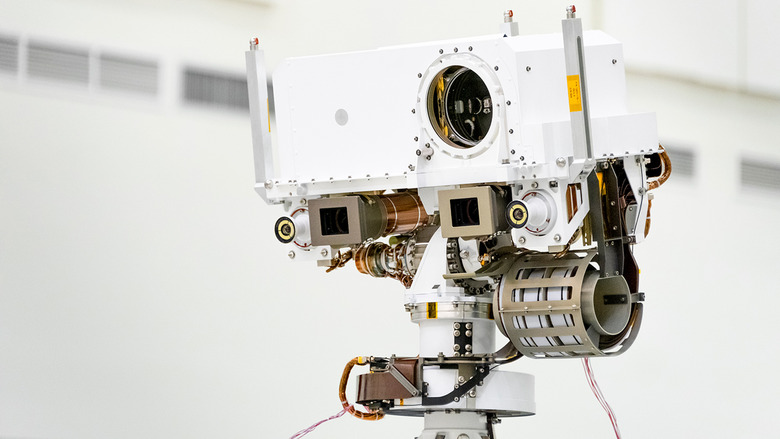NASA's New Mars Rover Has Ridiculous Vision
- NASA's Perseverance rover is equipped with a suite of imaging tools that will help it navigate and study the landscape of Mars.
- A total of five visual instruments are installed on the rover's head, each with a role to play.
- The Mars 2020 mission is still slated to launch this summer, despite the coronavirus pandemic.
- Visit BGR's homepage for more stories.
When NASA launches the Mars Perseverance rover to the Red Planet this summer it will be the most technologically advanced piece of equipment the space agency has ever sent there. It's an incredible machine from top to bottom, and to make sure it always knows where it's going, it's been equipped with a whole suite of glassy eyes.
As the mission team continues to prepare for launch day, the rover's various systems are getting a lot of attention. Ensuring that things will work as intended when Perseverance lands on Mars means checking and then rechecking every single component. In a new blog post, NASA explains how the rover's array of cameras just passed a very important "eye test."
Like its rover brethren that are already on Mars, Perseverance is equipped with several imaging tools that not only allow it to navigate but also to study the objects and terrain of the planet. In the image above you'll see not one, not two, but a total of five imaging instruments.
NASA describes the rover's "head" thusly:
The mast head contains the SuperCam instrument. (Its lens is in the large circular opening.) In the gray boxes beneath mast head are the two Mastcam-Z imagers. On the exterior sides of those imagers are the rover's two navigation cameras.
That's a whole lot of imaging muscle, and Perseverance will put it to good use when it reaches Mars in early 2021. During testing last year, NASA explained what it plans to do with all those electronic eyes.
"Along with its laser and spectrometers, SuperCam's imager will examine Martian rocks and soil, seeking organic compounds that could be related to past life on Mars," the space agency explained. "The rover's two Mastcam-Z high-resolution cameras will work together as a multispectral, stereoscopic imaging instrument to enhance the Mars 2020 rover's driving and core-sampling capabilities. The Mastcam-Z cameras will also enable science team members to observe details in rocks and sediment at any location within the rover's field of view, helping them piece together the planet's geologic history."
Of course, the rover will only be able to use all of these fancy tools if it actually makes it to Mars, and with the current global health crisis it was unclear if the Mars 2020 mission was really going to launch as planned.
The good news is that as far as NASA is concerned, the mission is still on track for an early summer launch. However, if the mission were to be pushed back for any reason, it would mean a significant delay. Due to the nature of Mars' orbit in relation to Earth, the earliest NASA could launch the rover would be in 2022 if it somehow missed its planned 2020 launch date.
